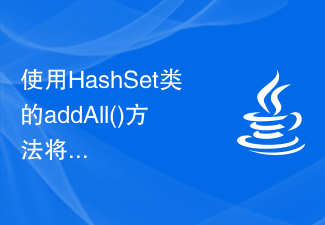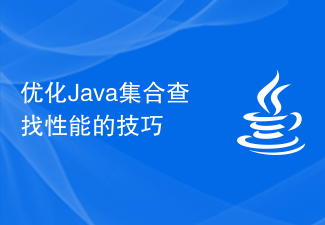The Iterator interface is also a member of the Java collection framework. Unlike the Collection and Map series, the Collection and Map series are mainly used to act as containers, while Iterator, as its name suggests, is mainly used to iteratively access Collections. The elements in the collection, Iterator objects are also called iterators.
The Iterator interface defines the following four methods:
》boolean hasNext(): If the collection being iterated through has not been traversed completely, return True
》Object next():Returns the next element in the collection
》remove():Removes the last next() method return in the collection Elements
》void forEachRemaining(Consumer action): Use Lambda expressions to traverse collection elements. This is the new default method added by java8 for Iterator
given below An instance
import java.util.ArrayList;
import java.util.Iterator;
import java.util.List;
public class Bike {
private String name;//Bicycle name
private double deposit;//deposit
public Bike(){}
public Bike(String name,double deposit){
this.name=name;
this.deposit=deposit;
}
public String getName() {
return name;
}
public void setName(String name ) {
this.name = name;
}
public double getDeposit() {
return deposit;
}
public void setDeposit(double deposit) {
this. deposit = deposit;
}
public static void main(String[] args) {
## List
## bikes.add(new Bike("小黄车",99));
bikes.add(new Bike("Mobike",200));## bikes.add(new Bike("Xiaoming Bicycle ",100));
//Traverse
Iterator it=bikes.iterator();
while(it.hasNext()){
## Bike bike=(Bike)it.next();
## System.out.println("[Model: "+bike.getName()+"][Deposit: "+bike.getDeposit()+"]");
}
}The output effect is as follows:
[Model: Xiaohuang Car][Deposit: 99.0]
[Model: Mobike][Deposit: 200.0]
The above is the detailed content of java8--Explanation on how to enhance Iterator to traverse collection elements. For more information, please follow other related articles on the PHP Chinese website!
 Java 8中如何计算一年前或一年后的日期?Apr 26, 2023 am 09:22 AM
Java 8中如何计算一年前或一年后的日期?Apr 26, 2023 am 09:22 AMJava8计算一年前或一年后的日期利用minus()方法计算一年前的日期packagecom.shxt.demo02;importjava.time.LocalDate;importjava.time.temporal.ChronoUnit;publicclassDemo09{publicstaticvoidmain(String[]args){LocalDatetoday=LocalDate.now();LocalDatepreviousYear=today.minus(1,ChronoUni
 如何优化Java集合排序性能Jun 30, 2023 am 10:43 AM
如何优化Java集合排序性能Jun 30, 2023 am 10:43 AMJava是一种功能强大的编程语言,广泛应用于各类软件开发中。在Java开发中,经常会涉及到对集合进行排序的场景。然而,如果不对集合排序进行性能优化,可能会导致程序的执行效率下降。本文将探讨如何优化Java集合排序的性能。一、选择合适的集合类在Java中,有多种集合类可以用来进行排序,如ArrayList、LinkedList、TreeSet等。不同的集合类在
 如何使用Java 8计算一周后的日期?Apr 21, 2023 pm 11:01 PM
如何使用Java 8计算一周后的日期?Apr 21, 2023 pm 11:01 PMJava8如何计算一周后的日期这个例子会计算一周后的日期。LocalDate日期不包含时间信息,它的plus()方法用来增加天、周、月,ChronoUnit类声明了这些时间单位。由于LocalDate也是不变类型,返回后一定要用变量赋值。packagecom.shxt.demo02;importjava.time.LocalDate;importjava.time.temporal.ChronoUnit;publicclassDemo08{publicstaticvoidmain(String[
 Java Iterator 与 Iterable:揭秘迭代器与可迭代对象的世界Feb 19, 2024 pm 02:15 PM
Java Iterator 与 Iterable:揭秘迭代器与可迭代对象的世界Feb 19, 2024 pm 02:15 PM在Java编程中,Iterator和Iterable接口是用于处理集合中元素的重要工具。Iterator接口提供了对集合元素进行迭代访问的方法,而Iterable接口则定义了集合的可迭代性,使集合中的元素可以通过Iterator访问。这两者的紧密配合,为我们提供了遍历集合元素的通用方法。Iterator接口Iterator接口定义了以下方法:booleanhasNext():检查集合中是否还有元素。Enext():返回集合中的下一个元素。voidremove():移除当前元素。Iterable接
 使用HashSet类的addAll()方法将一个集合中的所有元素添加到另一个集合中Jul 24, 2023 am 08:58 AM
使用HashSet类的addAll()方法将一个集合中的所有元素添加到另一个集合中Jul 24, 2023 am 08:58 AM使用HashSet类的addAll()方法将一个集合中的所有元素添加到另一个集合中HashSet是Java集合框架中的一个实现类,它继承自AbstractSet,并实现了Set接口。HashSet是一个基于哈希表的无序集合,其中不允许包含重复的元素。它提供了许多常用的方法来操作集合中的元素,其中之一就是addAll()方法。addAll()方法的作用是将指定
 Java Iterator 和 Iterable 的深入比较:优缺点分析Feb 19, 2024 pm 04:20 PM
Java Iterator 和 Iterable 的深入比较:优缺点分析Feb 19, 2024 pm 04:20 PM概念差异:Iterator:Iterator是一个接口,代表一个从集合中获取值的迭代器。它提供了MoveNext()、Current()和Reset()等方法,允许你遍历集合中的元素,并对当前元素进行操作。Iterable:Iterable也是一个接口,代表一个可迭代的对象。它提供了Iterator()方法,用于返回一个Iterator对象,以便于遍历集合中的元素。使用方式:Iterator:要使用Iterator,需要先获得一个Iterator对象,然后调用MoveNext()方法来移动到下一
 Java Iterator 与 Iterable:迈入编写优雅代码的行列Feb 19, 2024 pm 02:54 PM
Java Iterator 与 Iterable:迈入编写优雅代码的行列Feb 19, 2024 pm 02:54 PMIterator接口Iterator接口是一个用于遍历集合的接口。它提供了几个方法,包括hasNext()、next()和remove()。hasNext()方法返回一个布尔值,指示集合中是否还有下一个元素。next()方法返回集合中的下一个元素,并将其从集合中删除。remove()方法从集合中删除当前元素。以下代码示例演示了如何使用Iterator接口来遍历集合:Listnames=Arrays.asList("John","Mary","Bob");Iterator
 优化Java集合查找性能的技巧Jun 30, 2023 pm 02:57 PM
优化Java集合查找性能的技巧Jun 30, 2023 pm 02:57 PMJava开发中,使用集合是非常常见的操作之一。在实际开发中,经常需要对集合进行元素的查找操作。而集合的查找性能的高低直接影响着程序的执行效率和用户的使用体验。本文将介绍几种优化集合元素查找性能的方法。一、使用合适的集合类在Java中,有多种集合类可以选择,例如ArrayList、LinkedList、HashSet、TreeSet等等。不同的集合类有着不同的


Hot AI Tools

Undresser.AI Undress
AI-powered app for creating realistic nude photos

AI Clothes Remover
Online AI tool for removing clothes from photos.

Undress AI Tool
Undress images for free

Clothoff.io
AI clothes remover

AI Hentai Generator
Generate AI Hentai for free.

Hot Article

Hot Tools

Notepad++7.3.1
Easy-to-use and free code editor

MantisBT
Mantis is an easy-to-deploy web-based defect tracking tool designed to aid in product defect tracking. It requires PHP, MySQL and a web server. Check out our demo and hosting services.

DVWA
Damn Vulnerable Web App (DVWA) is a PHP/MySQL web application that is very vulnerable. Its main goals are to be an aid for security professionals to test their skills and tools in a legal environment, to help web developers better understand the process of securing web applications, and to help teachers/students teach/learn in a classroom environment Web application security. The goal of DVWA is to practice some of the most common web vulnerabilities through a simple and straightforward interface, with varying degrees of difficulty. Please note that this software

EditPlus Chinese cracked version
Small size, syntax highlighting, does not support code prompt function

SublimeText3 Linux new version
SublimeText3 Linux latest version






